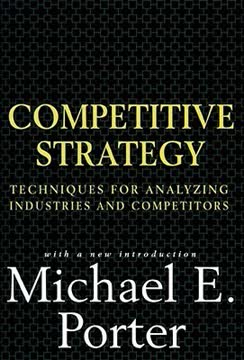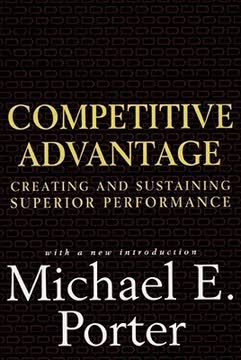重点摘要
1. 公司通常只能实现其战略潜在价值的63%
我们的研究表明,公司平均只能实现其战略承诺的63%的财务表现。
战略-绩效差距。 大多数公司未能实现其战略目标,留下了大量的潜在价值。这种预期与实际表现之间的差距在各个行业和地区普遍存在。根本原因通常在于规划和执行过程之间的脱节,以及不切实际的假设和预测。
未实现的潜力。 无法完全执行战略代表了组织的巨大机会成本。通过缩小这一差距,公司可能会将其财务表现提高60%到100%。这种未实现的价值突显了提高战略制定和实施能力的关键重要性。
领导层看不见。 也许最令人担忧的是,这种战略与绩效之间的差距的原因往往对高层管理人员是不可见的。这种缺乏可见性使得领导者难以诊断短板是源于战略缺陷、执行不力还是两者兼有,从而导致改进尝试误入歧途,未能解决根本原因。
2. 战略与绩效差距源于规划和执行的断裂
我们的调查结果显示了一系列事件,大致如下:战略被批准但沟通不畅。这反过来使得将战略转化为具体行动和资源计划几乎不可能。
沟通断裂。 战略与绩效差距通常始于战略目标在整个组织中的沟通不畅。当战略没有清晰地表达和传播时,员工缺乏对优先事项和目标的共同理解。
实施挑战。 模糊的战略方向使得将高层目标转化为具体的行动计划和资源分配变得困难。没有明确的指导,基层管理者难以将他们的决策和活动与总体战略目标对齐。
问责问题。 战略目标的不明确也使得建立有意义的绩效指标和问责机制变得具有挑战性。当预期结果未能实现时,往往没有明确的方法将短板追溯到具体的决策或行动,从而延续了绩效不佳的循环。
3. 高绩效公司将规划和执行过程联系起来
尽管大多数公司存在显著的战略与绩效差距,管理层可以缩小这一差距。一些高绩效公司已经找到实现更多战略潜力的方法。
综合方法。 领先公司认识到规划和执行是密不可分的。这些组织不是将它们视为独立的活动,而是创建了战略目标、运营计划和日常执行之间的明确联系。
同步改进。 高绩效公司同时提升其规划和执行能力。这种双重关注有助于确保战略基于运营现实,同时执行努力紧密对齐战略优先事项。
持续反馈循环。 通过建立强大的反馈机制,顶级公司可以快速识别和解决计划与实际表现之间的差距。这允许快速的课程修正,防止小的偏差演变成重大的战略失败。
4. 保持战略简单具体以推动一致行动
为了使规划和执行过程走上正轨,高绩效公司避免冗长的高目标描述,而是坚持用清晰的语言描述其行动路线。
清晰胜于复杂。 有效的战略以简单、可操作的术语表达,易于整个组织理解和内化。避免抽象概念和行话有助于确保各级员工能够将战略目标转化为具体行动。
可操作的方向。 高绩效公司提供明确的指导,说明组织将做什么和不做什么以实现其战略目标。这种具体性有助于在整个公司范围内对齐决策和资源分配。
一致的沟通。 简单、具体的战略原则可以一致地传达和强化,创建一个共享的语言和决策框架。这种对齐对于推动协调一致的行动以实现共同目标至关重要。
5. 挑战假设而非财务预测以实现现实规划
将构建假设的过程与准备财务预测的过程分开,有助于将业务单元与公司中心的对话建立在经济现实的基础上。
关注驱动因素。 高绩效公司将规划讨论从谈判财务目标转向挑战这些预测背后的基本假设。这种方法有助于在过程早期发现战略思维中的潜在缺陷。
基于事实的对话。 通过将对话建立在市场现实和竞争动态的基础上,组织可以创建更现实和可实现的计划。这种基于事实的方法建立了公司领导层与业务单元之间的信任,同时消除了有效执行的障碍。
避免政治谈判。 将假设构建与财务预测分开,有助于消除规划演变成目标政治谈判的倾向。相反,重点仍然是发展对市场机会和挑战的共同理解。
6. 使用通用框架将业务单元与公司战略对齐
如果没有一个严格的框架将业务在产品市场中的表现与其长期财务表现联系起来,高层管理人员很难确定业务单元战略计划所附带的财务预测是否合理和可实现。
共享语言。 采用通用的战略框架,如利润池的概念,创建了一个讨论战略的共享语言。这种对齐促进了公司领导层与业务单元之间更富有成效的对话。
将市场与财务联系起来。 一个强大的框架有助于将业务单元的市场表现与其长期财务预测联系起来。这种联系使得评估战略计划的合理性和可实现性变得更容易。
一致的评估。 有了通用框架,公司领导层可以更有效地评估和比较不同业务单元的战略计划。这种一致性改善了资源分配决策和整体投资组合管理。
7. 提前讨论资源部署以创建可行的计划
挑战业务单元何时需要新资源,将规划对话集中在公司各个层面实际需要发生的事情上,以执行每个单元的战略。
资源-战略对齐。 提前讨论资源需求,确保战略计划基于运营现实。这种对齐有助于防止创建不现实或不可执行的战略。
跨职能协作。 让不同利益相关者参与资源规划,促进跨职能协作,并在过程早期发现潜在的实施挑战。这种方法导致更强大和可行的战略计划。
领先指标。 通过密切跟踪资源部署,组织可以早期洞察战略执行进展。这允许及时干预和课程修正,当计划开始偏离预测时。
8. 明确优先事项以集中组织努力
领先公司明确这些优先事项,以便每位高管都清楚地知道应该将精力集中在哪里。
明确优先事项。 高绩效公司明确阐述一组有限的战略优先事项,这些优先事项对绩效有最大的影响。这种关注有助于防止精力分散在过多的项目上。
层层传递目标。 战略优先事项被转化为每个组织层级的具体行动项目和绩效指标。这种层层传递的方法确保了从高层到一线员工的对齐。
问责机制。 明确的优先事项与明确的问责和时间表相结合。这种清晰性有助于推动执行,使个人容易理解他们在实现整体战略中的具体责任。
9. 持续监控绩效以实现及时的课程修正
高绩效公司使用实时绩效跟踪来加速这一试错过程。
实时跟踪。 领先组织实施系统,实时或近实时监控关键绩效指标。这使得快速识别偏离计划成为可能,并允许快速干预。
领先指标。 除了跟踪滞后的财务指标,高绩效公司还监控提供战略成功或失败早期信号的领先指标。这种前瞻性的方法支持主动管理。
定期审查节奏。 建立一致的绩效审查节奏——通常是每周或每月——创造了及时课程修正的机会。这些频繁的检查有助于在不断变化的市场条件下保持战略执行的轨道。
10. 通过人才管理发展执行能力
发展执行能力。没有任何战略能比执行它的人更好。优先选择和发展管理者。
执行重点。 高绩效公司认识到战略执行是一种必须发展和培养的独特能力。他们投资于建立有效实施所需的技能和流程。
人才优先。 领先组织将选择和发展以执行为重点的管理者作为首要任务。这种对人才的重视确保了合适的人在合适的位置上推动战略实施。
激励对齐。 绩效管理和薪酬系统经过精心设计,以强化战略优先事项并奖励有效执行。这种对齐有助于激励和引导员工行为朝向战略目标。
最后更新日期:
FAQ
What's HBR's 10 Must Reads on Strategy about?
- Collection of Articles: This book is a compilation of essential articles on strategy from the Harvard Business Review, featuring insights from renowned authors like Michael E. Porter and Clayton Christensen.
- Strategic Concepts Focus: It covers fundamental concepts such as competitive advantage, strategic positioning, and aligning activities within a company for long-term success.
- Practical Frameworks: The articles provide practical methodologies that managers can apply to develop and execute effective strategies in their organizations.
Why should I read HBR's 10 Must Reads on Strategy?
- Expert Contributions: The book features insights from leading thinkers in the field of strategy, offering valuable perspectives to enhance strategic management understanding.
- Timeless Principles: The concepts discussed are applicable across various industries, making it a relevant resource for both new and experienced managers.
- Actionable Tools: Readers gain access to frameworks and tools that can be implemented to improve strategic decision-making within their organizations.
What are the key takeaways of HBR's 10 Must Reads on Strategy?
- Strategic Positioning: Emphasizes creating a unique and valuable market position that competitors cannot easily replicate.
- Operational Effectiveness vs. Strategy: Highlights that operational effectiveness is necessary but not sufficient for competitive advantage; true strategy requires trade-offs and focus on unique activities.
- Activity Fit: Stresses that a company’s activities must fit together to reinforce one another, creating a sustainable competitive advantage.
What are the best quotes from HBR's 10 Must Reads on Strategy and what do they mean?
- "Strategy is the creation of a unique and valuable position.": Differentiating a company from its competitors by focusing on unique value propositions.
- "Operational effectiveness is not strategy.": Distinguishes between performing better than competitors and having a strategic plan for long-term success.
- "Fit drives both competitive advantage and sustainability.": Emphasizes the importance of aligning and interacting company activities for maintaining a competitive edge.
What is the concept of strategic positioning in HBR's 10 Must Reads on Strategy?
- Unique Value Creation: Involves creating a unique value proposition that addresses specific customer needs, setting a company apart from competitors.
- Trade-offs in Strategy: Requires making deliberate trade-offs about which activities to pursue and which to avoid, focusing on core strengths.
- Sustainable Advantage: Aims to achieve a sustainable competitive advantage that is difficult for competitors to replicate.
How does HBR's 10 Must Reads on Strategy define operational effectiveness?
- Performance Improvement: Refers to performing similar activities better than rivals, focusing on efficiency, quality, and speed.
- Not a Substitute for Strategy: While important, operational effectiveness alone does not constitute a strategy, as it can be easily imitated.
- Relative vs. Absolute Improvement: Leads to absolute improvements but often results in relative improvements that do not provide a competitive edge.
What is the significance of the "Five Competitive Forces" framework in HBR's 10 Must Reads on Strategy?
- Industry Analysis Tool: Developed by Michael E. Porter, it analyzes competitive dynamics within an industry.
- Understanding Profitability: Helps companies understand factors influencing industry profitability, like bargaining power and threat of substitutes.
- Strategic Decision-Making: Informs strategic decisions to enhance competitive position and profitability.
What is the Blue Ocean Strategy mentioned in HBR's 10 Must Reads on Strategy?
- Uncontested Market Space: Focuses on developing new markets where competition is minimal or nonexistent, allowing for innovation.
- Value Innovation: Involves offering customers a leap in value while reducing costs, leading to new products or services.
- Success Examples: Includes companies like Cirque du Soleil, illustrating how innovative thinking can lead to market advantages.
How does HBR's 10 Must Reads on Strategy address execution challenges?
- Aligning Strategy with Execution: Stresses the need to align resources and capabilities with strategic objectives for successful implementation.
- Monitoring Performance: Advocates for continuous monitoring of performance against strategic goals, with regular reviews and adjustments.
- Clear Decision Roles: Highlights defining clear decision-making roles to enhance accountability and streamline execution.
What is the RAPID Decision Model discussed in HBR's 10 Must Reads on Strategy?
- Roles in Decision Making: Outlines five key roles: Recommend, Agree, Perform, Input, and Decide, each with specific responsibilities.
- Clarity and Accountability: Assigns clear roles to avoid confusion and delays, ensuring everyone knows their responsibilities.
- Improving Decision Quality: Encourages collaboration and input from stakeholders, enhancing decision quality.
How can I apply the concepts from HBR's 10 Must Reads on Strategy in my organization?
- Assess Current Strategy: Evaluate your organization’s strategy against the book's principles, identifying areas for improvement.
- Implement Blue Ocean Thinking: Encourage creative thinking about new market opportunities using the blue ocean strategy framework.
- Establish Clear Decision Roles: Adopt the RAPID model to clarify decision-making roles, streamlining processes and enhancing accountability.
What are some common pitfalls in strategy execution mentioned in HBR's 10 Must Reads on Strategy?
- Lack of Clarity: Ambiguity in decision-making roles can lead to confusion and delays in execution.
- Poor Communication: Ineffective communication of strategy can result in misalignment and lack of buy-in from employees.
- Failure to Monitor Performance: Neglecting to track performance against strategic goals makes it difficult to identify shortfalls and take corrective action.
评论
《哈佛商业评论战略必读10篇》是一部备受推崇的商业战略文章合集。读者称赞其对从竞争力量到愿景设定和战略执行等主题的全面覆盖。该书为学生和专业人士提供了宝贵的见解,尤其是迈克尔·波特的文章备受好评。尽管部分内容可能有些过时,但核心原则依然具有现实意义。读者欣赏该书简明的格式和实用的框架,尽管有些人觉得某些文章不够吸引人或有些重复。
Similar Books















